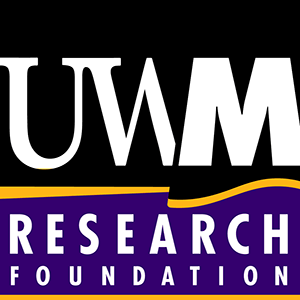UWM Research Foundation Completes Fourteenth Cycle of Catalyst Grant Awards
The UWM Research Foundation recently completed awarding Catalyst Grants to three projects.
Now in its fourteenth year, the Catalyst Grant Program has awarded over $5.5 million dollars in seed funding for 101 projects. These projects have led to 55 issued patents, 31 license/option agreements, and more than $23.4 million in follow on investments in UWM technologies.
A total of $150,000 is being awarded thanks to the support of the Lynde and Harry Bradley Foundation. These grants support promising research and development in areas where UWM has the greatest potential to impact the regional economy through commercialization activities.
The award winners are as follows:
Mobile Produced Water Recycling and Resource Recovery System ($50,000)
Charles Paradis, Ph.D., Assistant Professor, Dept. of Geosciences and Josh Swigart, Ph.D. Candidate, Dept. of Geosciences
Dr. Paradis’ research focuses on the fate, transport, and remediation of contaminants in the environment and groundwater. His background in hydrology and geology makes him an excellent mentor and partner to Josh Swigart, a PhD student who has invented a system to recycle produced water which is naturally occurring water that comes out of the ground along with oil and gas. With the Catalyst funds, they will focus on recycling produced water from drilling activities in the Permian Basin, which is a large-scale issue.
The overarching goal is to implement a novel water recycling technique at current deep-well injection stations for water re-sale for hydraulic fracturing, crop watering, potable water for livestock, and for inorganic metals resource recovery. This technique has the potential to allow deep-well injection stations to convert over to water recycling/resource recovery stations in a way that owners can financially benefit from accepting produced water.
Novel Bioreactor for the Removal of Persistent Chemicals from Contaminated Water ($50,000)
Shangping Xu, Ph.D., Professor, Geosciences, Yin Wang, Ph.D., Assistant Professor, Civil and Environmental Engineering, and Erica Young, Ph.D., Associate Professor, Biological Sciences
Per- and polyfluoroalkyl substances (PFAS) represent a large group of man-made chemicals that are widely used in consumer products ( including cookware, packaging), airports, and military installations to name a few. These chemicals do not break down in the environment or in the body, and are known to lead to adverse health outcomes in humans. A growing number of research papers have shown that PFAS contamination in water sources is widespread in the United States.
The goal of this project is to develop highly efficient, cost-effective bioreactors that can bioaccumulate large quantities of PFAS and aid in the removal of PFAS, particularly under challenging environmental conditions. These novel bioreactors can address existing challenges and may be used for the effective removal of PFAS from municipal and industrial wastewater, landfill leachate, groundwater pumped from PFAS pollution flumes, and discharge from membrane filtration systems.
3D Printing of Graphene Reinforced Nanocomposites ($50,000)
Pradeep Rohatgi, Ph.D., Distinguished Professor, Materials Science and Engineering
Additive manufacturing has the potential to transform manufacturing as we know it, bringing production closer to demand and sustainability with its design freedom. Throughout the industrial manufacturing, there is an increasing need for high performance materials as designers are moving away from conventional metals and standard materials. Graphene, a carbon-based material, has one of the highest strengths among the currently available reinforcements. Achieving the right ratios of graphene in the aluminum matrix is challenging and has not been possible to date with current techniques.
Dr. Rohatgi’s work will help develop a technology that can produce ultralight, high-strength, high temperature resistant graphene reinforced nanocomposites. His work will enable industry manufacturing of high perfomance materials that can be used in range of applications including automotive, aerospace, and military applications.[/vc_column_text][/vc_column][/vc_row]
